The Arcata & Mad River, while neither long nor impressive, is nevertheless a railroad of great historic importance. Begun in 1854, just four years after the discovery of Humboldt Bay, it was destined to become the first common carrier railroad in California, if not the entire West Coast, with the longest history of continuous operation of any western railroad.

The town of Arcata, then called Union, was situated on the north shore of the bay, requiring a wharf some two miles long to reach deep water. To handle cargo over this long pier, some sort of railroad was indicated. So, on December 15, 1854, the Union Plank Walk, Rail Track and Wharf Company was incorporated. Early trains consisted of a small four-wheel car drawn by a horse. Not very spectacular, but a railroad, nonetheless. Among the horses that served as motive power, one, due to the imaginative name of “Spanking Fury” remains indelibly impressed on the railroad’s history.
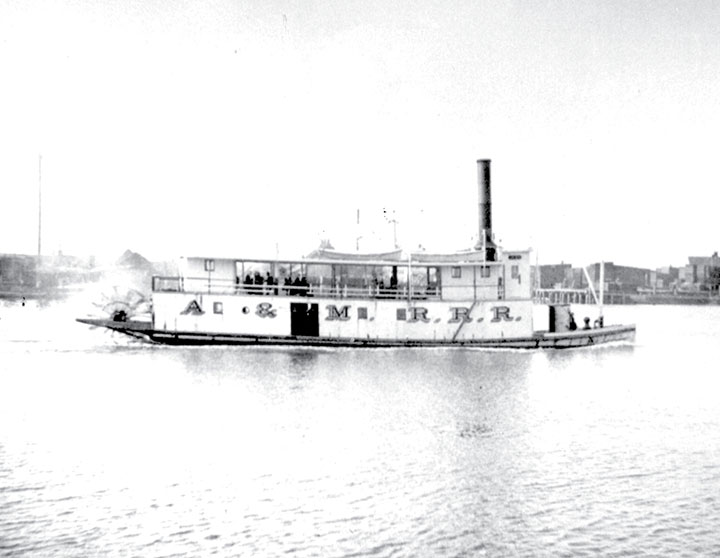
-Photo, Lynwood Carranco collection.
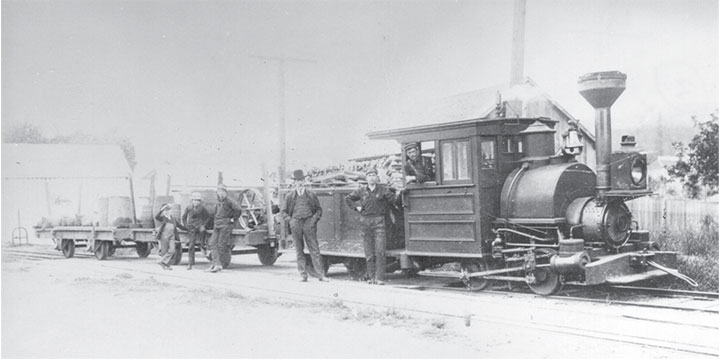
-Photo from B.H. Ward, John Labbe collection.
The track, for reasons lost in time, was constructed to the odd gauge of 45¼ inches. The rails were wood, and cars continued to trundle back and forth hauled by horses for some twenty years. But in June 1875, a one-mile-long extension was built to serve the Jolly Giant mill to provide this extended service. The Company was reorganized as the Union Plank Walk and Railroad Company and a small locomotive named BLACK DIAMOND was constructed, probably by the Eureka Iron Works, in Eureka. To support the added weight of this locomotive, the wooden rails were topped with strap iron. Again in 1876, the road was extended another mile to serve the Dolly Varden mill.
On June 15, 1878, the railroad was taken over by the newly organized Arcata Transportation Company, and in 1880 it was again extended as far as Warren Creek to serve the Isaac Minor mill.
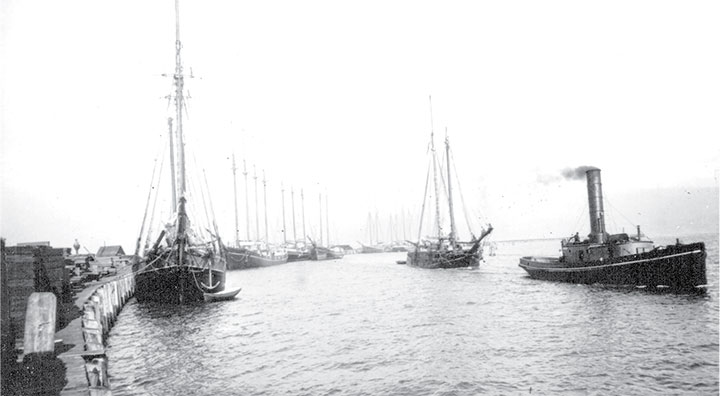
-Photo, Lynwood Carranco, John Labbe collection.
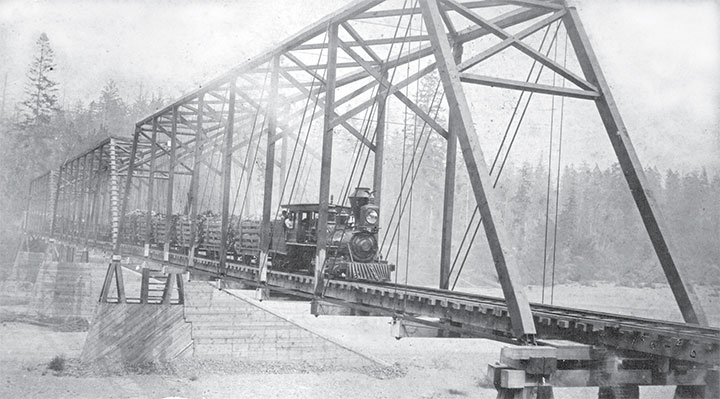
-Photo, California Redwood Association, John Labbe collection.
The Arcata & Mad River Railroad Company was incorporated on July 22, 1881. A small locomotive was purchased from the H.K. Porter Company. She was designated #2 and named ARCATA. To support this locomotive, the wooden rail was replaced by steel rails and the “Annie and Mary” as it was affectionately dubbed, became a full-fledged railroad.
Aside from additional extensions to reach new mills and the addition of numerous woods spurs, operations remained much the same until 1903 when the railroad was sold to the Northern Redwood Lumber Company. In 1914, the A&MR was dual gauged, by adding a third rail, between Korbel and Korblex. This allowed standard gauge cars from the Northwestern Pacific railroad to serve the mill. The connecting mainline of the private Northern Redwood Lumber Company was dual gauged around 1920 and all the new woods lines were built to standard gauge after 1922. The narrow gauge lines slowly disappeared as the areas they served were cut out and the trackage removed. The Heisler locomotives used in the woods were rebuilt to standard gauge.
The Depression shut the mill down in 1933, and it was several years before the company could reorganize and start up again. The line from Korblex through Arcata and onto the two-mile long Humboldt Bay wharf was removed about 1942.
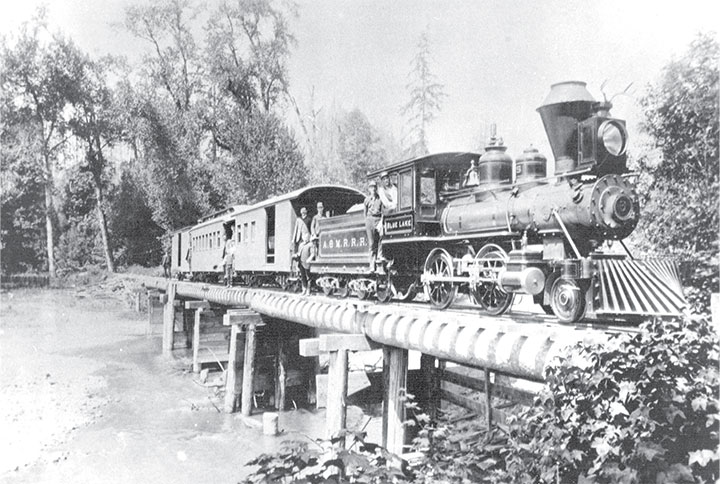
-Photo by A.W. Ericson, Lynwood Carranco/John Labbe collection.
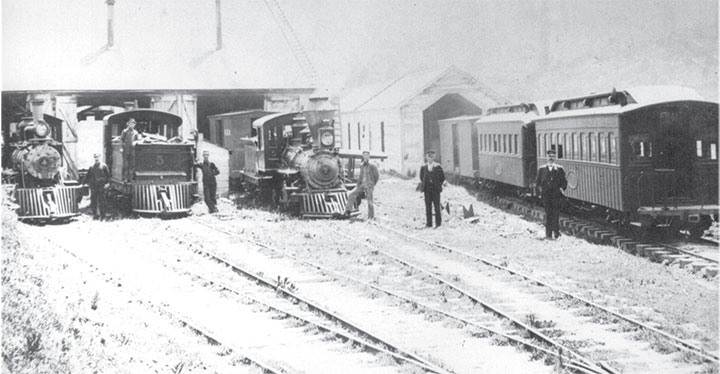
-Photo, Lynwood Carranco, author’s collection.
With the purchase of the Northern Redwood Lumber Company by the Simpson Redwood Company in 1956, responsibility for the railroad reverted to the new owners. The woods lines were removed in the fall of 1956, but the Arcata & Mad River remained in operation as a common carrier doing a good business serving a few local industries until mid 1984 when a business slump forced many customers to shut down. In the early 1970s, the line served twelve customers, but since the mills had closed, there was no need for the seven-mile link. I remember a visit to the line in the early 1970s when they were getting out close to twenty loads of lumber per day. The railroad ceased operations in November 1984 when Simpson announced it would abandon the railroad. They had found trucking its products from the Korbel mill to Korblex to be placed on Eureka Southern rail cars (who had taken over the NWP) was less expensive than running the train. The line remained intact for some time, giving the option for the Eureka Southern Railroad to purchase the line, an option that was never exercised.
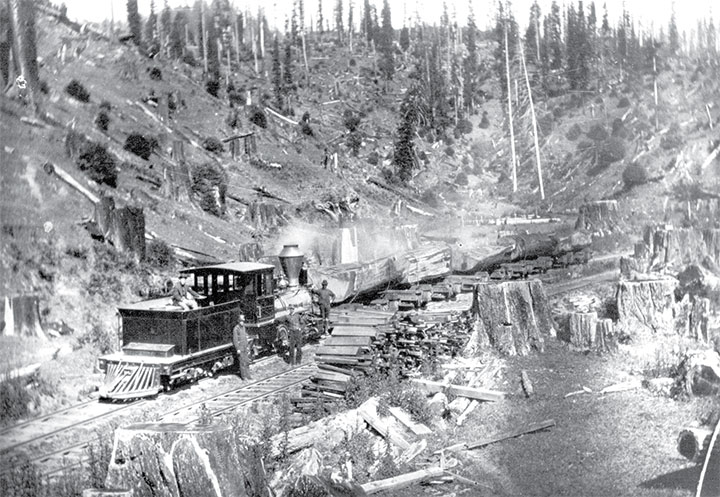
-Photo, California Redwood Association.
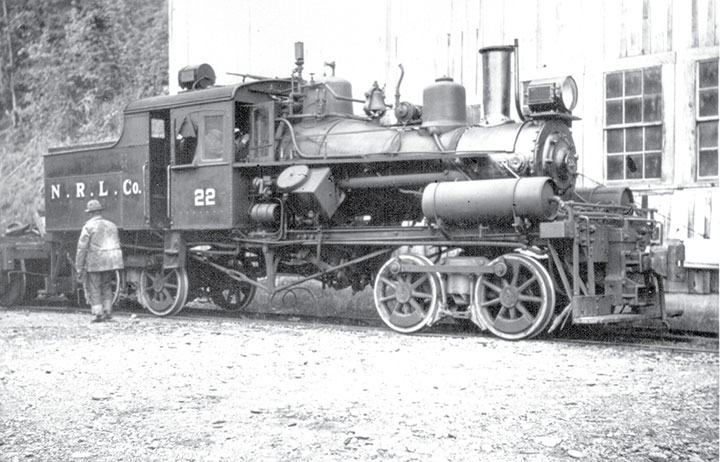
-Photo by Jim Gerts, John Labbe collection.